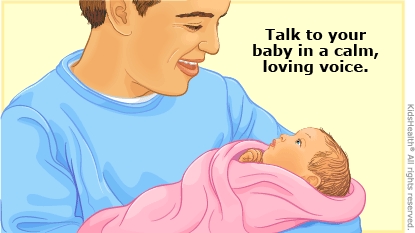It's not always easy to tell why a baby is crying. But crying is a normal and healthy way for a baby to communicate. The health care provider carefully checked your baby and didn't find any problems. It's safe for you to care for your baby at home.




How much crying is normal? Newborns sleep a lot and do not cry very much. As they grow, they become more active. By 6 weeks of age, a baby might cry and fuss many times a day, even up to a total of 2–3 hours per day. As the baby gets older, the amount of crying slowly lessens.
Can you spoil a crying baby? No, babies are too young to be spoiled. Babies often communicate with crying to tell caregivers that they need attention. When a caregiver comforts a baby, it helps the baby feel secure. Holding, walking with, or rocking a crying baby is the right thing to do.